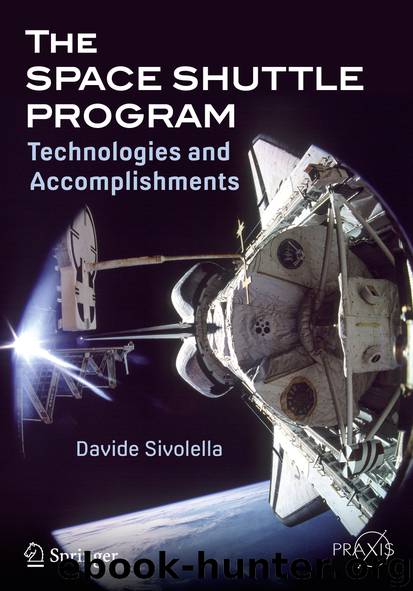The Space Shuttle Program by Davide Sivolella

Author:Davide Sivolella
Language: eng
Format: epub
Publisher: Springer International Publishing, Cham
As part of the life sciences research, the mammals were studied to seek clues to human physiology and behavior in space. In this case, the primary objective of the four projects with the monkeys and rats was to observe a large number of animals in space in a uniquely designed and independently controlled housing facility. Scientists had the opportunity to assess the efficacy of the facility and make recommendations for future flights on which more extensive studies would be carried out with animals.
For Don L. Lind , being assigned as a mission specialist was a dream come true after a 19-year wait since his selection as an astronaut in 1966. On STS-51B he was responsible for supervising the proper functioning of Spacelab and its experiments. “I was the Laboratory Director…When the mission was being formalized, I thought, ‘Now, there are several of those experiments that I’ll be responsible for that will run in an automatic mode. I will have to check [on] them once an hour, but they may run for 2.5 hours in an automatic mode. So I’m going to have some free time in space.’” Rather than simply use such free time to enjoy the view outside, Lind knew he would be able to do something of benefit to the scientific community. The magnificent play of light of the auroras had been rarely photographed from space and the quality of the pictures was not very good. “Before our mission, the aurora had been photographed [only] by some slow scan photometers, which gives you a blurred picture. [It is] like trying to take a picture of a waterfall. [You] just [get] a white blur. Owen Garriott in Skylab had taken, I think, six or nine pictures of the aurora that were way off on the horizon.” Together with a friend from the time he was in Alaska for his post-doctoral study, Lind set out to plan an experiment to photograph auroras in high resolution. “The first thing we wanted were high time-resolution pictures of the aurora with a TV camera. So we started looking around. What TV system could we get that would be sensitive enough in such a low light level? It turned out that the TV camera that was already on the Shuttle was as good as any TV camera we could’ve bought in the world. But we had to take off the color wheel and photograph in black and white, instead of color. So we got one of the cameras modified. Because now we would be photographing only in black and white, we wanted to take some still photographs in color to document the color the auroral light, since that would identify what particles were emitting the light. So we started to look around for an appropriate camera and camera lens. It turned out that the camera that we already had on board, and the lens we already had, were again as good as we could have gotten anywhere. NASA only had to buy three rolls of special sensitive color film.
Download
This site does not store any files on its server. We only index and link to content provided by other sites. Please contact the content providers to delete copyright contents if any and email us, we'll remove relevant links or contents immediately.
| Automotive | Engineering |
| Transportation |
Whiskies Galore by Ian Buxton(41532)
Introduction to Aircraft Design (Cambridge Aerospace Series) by John P. Fielding(32890)
Small Unmanned Fixed-wing Aircraft Design by Andrew J. Keane Andras Sobester James P. Scanlan & András Sóbester & James P. Scanlan(32574)
Craft Beer for the Homebrewer by Michael Agnew(17934)
Turbulence by E. J. Noyes(7701)
The Complete Stick Figure Physics Tutorials by Allen Sarah(7143)
Kaplan MCAT General Chemistry Review by Kaplan(6597)
The Thirst by Nesbo Jo(6439)
Bad Blood by John Carreyrou(6277)
Modelling of Convective Heat and Mass Transfer in Rotating Flows by Igor V. Shevchuk(6225)
Learning SQL by Alan Beaulieu(6036)
Weapons of Math Destruction by Cathy O'Neil(5831)
Man-made Catastrophes and Risk Information Concealment by Dmitry Chernov & Didier Sornette(5650)
Digital Minimalism by Cal Newport;(5391)
Life 3.0: Being Human in the Age of Artificial Intelligence by Tegmark Max(5187)
iGen by Jean M. Twenge(5163)
Secrets of Antigravity Propulsion: Tesla, UFOs, and Classified Aerospace Technology by Ph.D. Paul A. Laviolette(4992)
Design of Trajectory Optimization Approach for Space Maneuver Vehicle Skip Entry Problems by Runqi Chai & Al Savvaris & Antonios Tsourdos & Senchun Chai(4841)
Electronic Devices & Circuits by Jacob Millman & Christos C. Halkias(4748)
